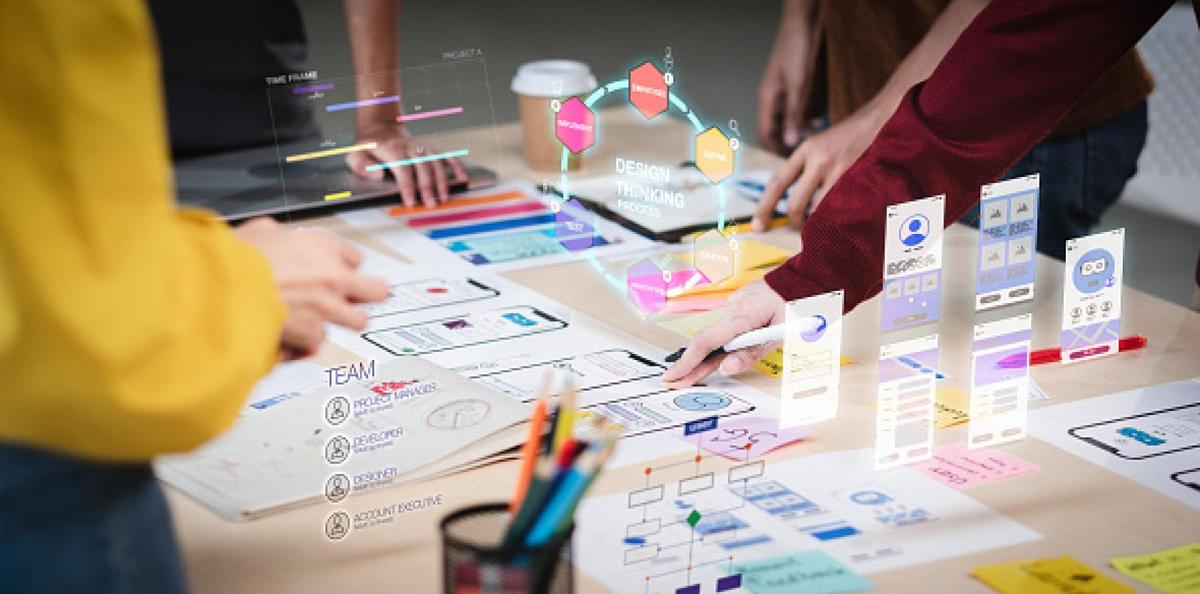
Implementing A Headless CMS- Part 1: Use Cases & Best Practices
Jaime Escott - 4 Min read

Your website is one of your most important assets. It’s where customers go to learn about your products and services and is often your first impression to new customers. Equally, staying ahead of the curve is essential to success, so it's important to make sure your website is always up to date with the latest trends and technologies.
If you are looking for a way to achieve an innovative, fresh, and effective website then you may want to consider a headless CMS. Since its launch, headless CMSes have grabbed the attention of some of the top developers across industries. They can offer a number of benefits when applied in the right use case, so it's important to understand when they can be useful and how they differ from traditional CMSes. Let's take a closer look!
What is a headless CMS
A content management system (CMS) is a software application that enables you to create and manage digital content. A headless CMS is a specific type of CMS that separates the user interface (UI) and presentation layer from the back-end data storage and processing. Simply put, it separates the content from the presentation, so the content is considered the body and the presentation is considered the head and it does not rely on any front-end interface or templates. The UI and presentation layer are decoupled from the back-end so they can be managed and delivered independently, making it perfect for projects that need a lot of flexibility and customization.
Benefits of a headless CMS
A headless CMS is an attractive option for businesses looking to create unique, custom user experiences. As mentioned above, it delivers content to applications and websites without relying on a traditional front-end interface which provides developers with more options for personalization.
As a developer, I see several advantages to a headless CMS over a traditional system including:
- The ability to present content across multiple channels
- More flexible approach to the layout of content
- Ability to create more creative designs
- The CMS doesn’t add any overhead to the code
- No more traditional CMS upgrades
However, a headless CMS isn’t fit for all use-cases so it’s important to weight the pros and cons as traditional CMS systems have their own advantages as well.
- Traditional CMS systems have a ton of functionality for the web channel that would need to be built in a headless scenario
- Most CMS systems offer a decoupled approach that allows you to build the front end in a headless way
- Content preview built in
- Flexible design systems for content creators
- Less dependencies on developers
When to choose a headless CMS
When most people think of a content management system (CMS), they think of something such as WordPress. These systems are popular because they allow users to create and manage websites easily. However, they have one major downside: they are "head-heavy". This means that on many of these platforms the majority of the work in creating and managing a website happens on the front-end – in other words, on the website itself.
Depending on the project, this can pose a problem for modern marketing teams who need to be able to quickly adapt their content to new needs and trends. For example, if you want to add new content or change the layout of your website, you need to go into the codebase and make changes yourself or stick to a predetermined template. This limits your creativity and is often time-consuming for non-technical users.
Enter headless CMS: a newer technology that can be an extremely important part of an overall content strategy. A headless CMS should be considered for projects if there is a need to communicate across multiple channels, you want or need flexibility in the front-end platforms for the presentation, and there are developers to support it. This system allows users to create and manage websites without having to touch any codebase. The back-end manages all of your website's content while the front-end displays it in whatever format you choose – no coding required. Additionally, because the back-end and front-end are managed separately, there is no downtime during maintenance. This makes a headless CMS a great option for growing companies as it allows you to update and optimize your website without compromising its performance.
Recently, I was working on a small project that had a need for a lot of content, so we decided a headless CMS would be a good fit. It was a .NET Core site where one of the requirements was for content authors to be able to manage dozens of pages. The authors of the content didn’t need to be able to create layouts or complex workflows; they just needed the ability to add and maintain some pages on the site. I decided to use Kentico Kontent to experiment with a headless approach. The team and I were amazed with how quick and easy it was to get the content integrated with the application.
If any of these scenario’s sound like something your team would benefit from, take a look at our part two for a complete guide on implementing a headless CMS system, it could revolutionize how you manage your online presence.